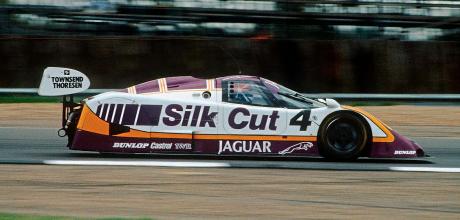Jaguar dominates 1987 World Sportscar Championship
With much made both then and now of Jaguar’s 1988 and 1990 victories of the Le Mans 24 Hours, its utter domination of the 1987 World Sportscar Championship has been largely forgotten. Yet it was arguably a much bigger achievement than winning a single, albeit 24-hour, race.
Following just one victory in 1986 (its first full season after returning to sportscar racing in the early Eighties), Jaguar and the team behind its motorsport programme, the Kidlington-based Tom Walkinshaw Racing, needed more to justify the huge cost of competition at this level.
So to achieve this, TWR designer Tony Southgate made 64 changes to the previous year’s XJR-6, mainly to the aerodynamics – which Southgate later described as “a leap forward” – resulting in the XJR-8. Together with the V12 increasing in size from 6.0 to 7.0 litres, from the outset it was a much faster car than its predecessor.
To further improve its chances, Jaguar then added a then-current Formula 1 driver, the American Eddie Cheever, plus Raul Boesel from Brazil, who at the time raced in the American CART series, to its already impressive driver roster. With Porsche pulling out at the end of the previous season leaving several privateer teams to continue campaigning its all-conquering 962, this was Jaguar’s best chance at success. It was an opportunity it took with both hands. Of the ten races, Jaguar won eight (including at Silverstone as seen here), setting a new benchmark for all other teams to aspire to. The fact that one of the two it didn’t win was LeMans (the other being the Norisring in Germany) took a slight shine off the overall success since the famous 24-hour race was the one Jaguar had wanted to win above all others. Yet it had got close before failure had struck all three cars. “What I regret the most was leading Le Mans with just a few hours to go and having mechanical failures,” said Cheever in John Starkey’s 2020 book, TWR’s LeMans-winning Jaguars. “To this day it bothers me. Heartbreaking.” Yet it was still an incredible achievement for what was compared to others a relatively small outfit. “Every victory has been gold-plated,” said Motorsport Magazine in its October 1987 issue, “earned by the most professional team with the best equipment and drivers, and even Porsche’s loan of factory-prepared 3.0-litre engines to the leading private teams has not been enough to halt an overwhelming force from Coventry and Kidlington.” The year was completed when Boesel took the driver’s championship with five wins. Yet Jaguar made little of this double success, only producing special models of its road cars – the XJR-S and XJR – following its 1988 Le Mans victory. It’s due to the popularity of these cars and those that followed why Jaguar’s 1987 success has become largely overlooked. Yet 25 years later, winning both WSC championships remains one of Jaguar’s biggest and most important achievements in motorsport.


